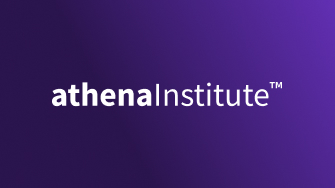Rethinking EHR optimization from the clinician’s perspective
Ask any physician how they feel about their EHR software, and chances are you won’t get a rave review. As the Chief Product Officer at a leading EHR company, I'm not offended, I'm motivated.
I’ve spent my entire career building software for physicians — from startup founder to CEO to Chief Product Officer at athenahealth. I’ve seen what happens when tools designed to help wind up getting in the way. That’s why my approach to assessing our product development is simple: if it’s not helping doctors, it’s not working.
During a recent Becker’s Hospital Review panel on EHR optimization, I said something that got a reaction from the room: “I’m probably the only chief product officer in the world focused on getting people to use their software product less.” It might sound counterintuitive, but I believe it’s true. Software supporting physicians should fade into the background, so they can stay focused on their patients — not on their screens.
Redefining optimization: less friction, more time for care
Too often, EHR optimization gets confused with feature overload. More screens, more tools, more clicks. But in reality, better doesn’t mean more. It means faster clinical workflows. Less (or better no) documentation at night. Fewer distractions during the visit. At athenahealth, we track time spent in the EHR because we see it as a key measure of success: when physicians spend less time navigating the system, they get more time with patients — and with their families.
We’ve seen firsthand that elegant software can reduce friction. And with the right design choices, you really can do more with less.
Change is hard. But it has to be easier.
The biggest challenge isn’t building new features. It’s getting people to use them.
I’ve walked into practices that are still using workflows from a decade ago, even though their HIT software has changed several times. Not because they’re resistant to change — but because they’re busy. They don’t have the time to hunt for what’s new or retrain themselves every time the interface shifts.
That’s why we’re shifting how we introduce product updates. Rather than expecting clinicians to dig through training manuals or email updates, we’re focused on making our features intuitive to use so training isn’t needed, where a nudge is required we’re building smarter prompts — tools that guide users in the moment, based on their actual behavior. It’s part of a broader shift in our thinking: implementation isn’t the finish line. It’s just the starting point.
If we want clinicians to benefit from smarter systems, we need to meet them where they are, in the real-world chaos of a practice day.
EHRs should work for doctors. Not the other way around.
Listening to get it right, not to be right
At athenahealth, every new feature is tested against one simple question: Is this making the user experience better?
We run something we call the Standard Feature Perception Index — essentially a “before and after” check. If a feature doesn’t improve how a user completes a task, we revisit it.
One example I shared at Becker’s: we once released a tool to help physicians refer patients to a provider based on quality ratings and network data. It looked great on paper. But the feedback was clear: sometimes they wanted to refer to a colleague they knew and already trusted. So, we brought back the favorite feature. Not because we were wrong about the data — but because we were wrong about what mattered to physicians.
Building toward an intelligent partner in care
One area where we’re seeing meaningful momentum is clinical documentation. Our AI-powered Ambient Notes tool has already helped reduce the time physicians spend writing notes — and the feedback has been promising. But this is just the beginning.
EHRs can now listen and read. That means we’re not just helping with notes — we’re rethinking how information flows across the system. Smarter task routing. Prioritized inboxes. Relevant insights from unstructured data, draft orders, suggested codes, targeted suggestions that align with specialty and workflow. This is where artificial intelligence starts to evolve from a cool tool into a core part of making the EHR a delightful companion for clinicians.
Of course, not every innovation lands perfectly. We’ve seen firsthand how AI-suggested responses to patient inquiries, for example, can be controversial. That’s why we watch adoption metrics, listen closely to feedback, and adjust quickly when needed. Innovation without responsiveness isn’t innovation — it’s disruption.
The goal isn’t a flashier EHR. It’s a better day.
We’ve invested over $815 million over the past 3 years on R&D teams to drive improvements in feature functionality, reliability, and supportability. But no matter how much we build, it’s meaningless unless it makes a difference for the people delivering care.
Because an EHR isn’t just a system of record anymore — it’s becoming a partner in delivering care. And if we’re serious about reducing burnout, improving outcomes, and building software that demands more, we need to deliver tools that do more by demanding less of our users.
That’s what we’re aiming for at athenahealth. And that’s what I mean when I say: EHRs should work for doctors. Not the other way around.












